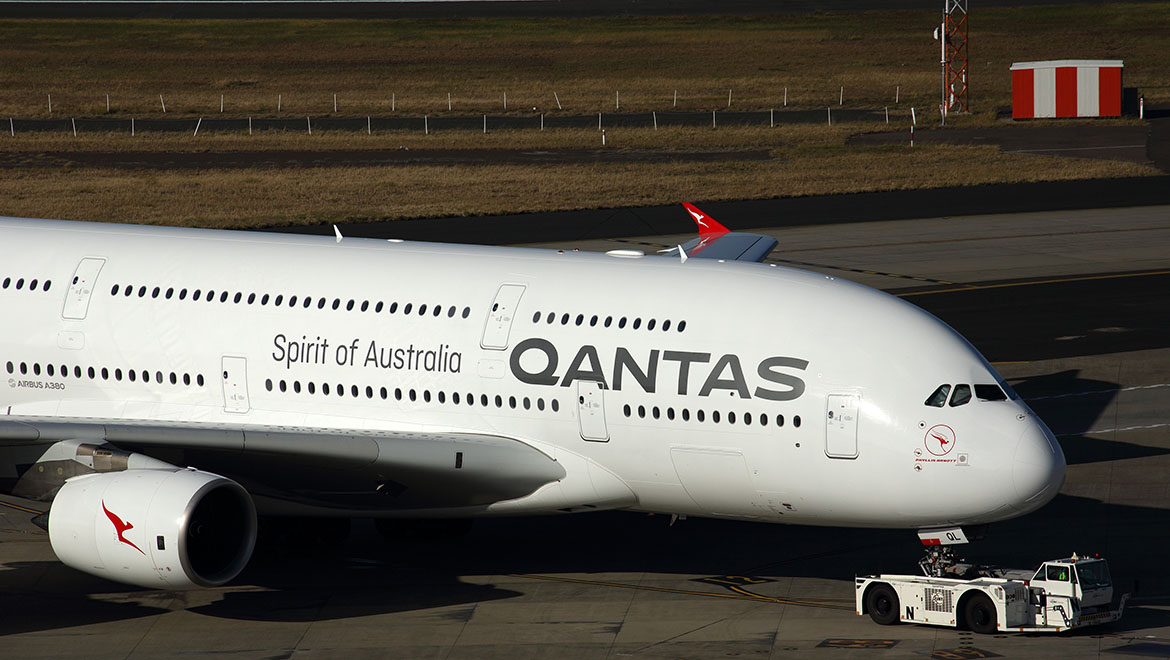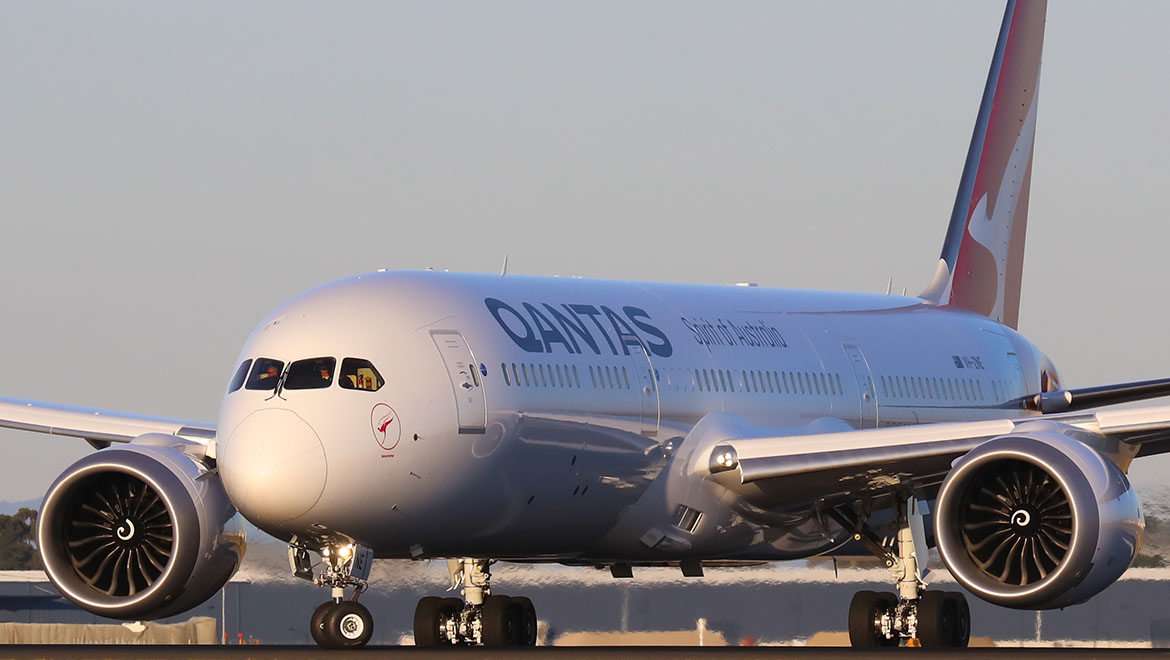
Qantas says strong revenue growth should help offset what is expected to be a $4 billion fuel bill in 2018/19.
The airline group expects its total fuel bill to rise 27 per cent to $4.09 billion for the 12 months to June 30 2019, from $3.23 billion in the 2017/18 financial year. This is based on a jet fuel forward market price of A$130 per barrel for the remainder of 2018/19.
The $4.09 billion estimate outlined in a trading update to the Australian Securities Exchange (ASX) on Thursday is an upward revision from the $3.92 billion total fuel bill Qantas forecast at its full-year results presentation in August.
On the plus side, Qantas said rising fuel costs were “substantially offset by net passenger revenue growth and capacity discipline”, with the value of forward bookings up eight per cent compared with the same period a year ago.
“Our record passenger revenue performance for the first quarter meant that we were able to substantially recover higher fuel prices,” Qantas chief executive Alan Joyce said in the trading update.
“Market demand for travel remains fundamentally strong and we’re seeing some wind-back of competitor capacity growth.”
Joyce described the current market conditions as “cyclical headwinds impacting the sector”.
The International Air Transport Association (IATA) jet fuel monitor shows the jet fuel price was at US$95.26 per barrel in mid-October, up about 40 per cent from a year earlier. Fuel is typically an airline’s second-biggest cost after staff.
Meanwhile, Association of Asia Pacific Airlines (AAPA) director general Andrew Herdman said recently airlines in the region, and indeed globally, are still forecast to post healthy profits for the period ahead, albeit lower than in previous years.
“That rise in oil prices has continued relentlessly this year and that’s been biting airlines depending on the extent to which they are hedged,” Herdman told reporters at the AAPA Assembly of Presidents in Jeju, South Korea on October 18.
“The question has been how much of the fuel cost can be passed on in the average fares and that varies dramatically by market. But in general there is a lag and margins have been under pressure.
“The pressure in Asia based on the results we’ve seen so far this year is that it’s been very difficult to pass on the full cost impact and so we are seeing margins come down and profitability pullback as a result.”
Qantas said it had hedged 76 per cent of its fuel needs in 2018/19 and 39 per cent in 2019/20.
In terms of the fleet, Qantas said it expected to receive its seventh and eighth Boeing 787-9s in November. The aircraft will be based in Brisbane.

Qantas outlines revenue growth, flat capacity outlook
Qantas said total revenue across the airline group rose 6.3 per cent to $4.41 billion in the first quarter of 2018/19, compared with the prior corresponding period.
Meanwhile, revenue per available seat kilometre (RASK) grew 5.4 per cent. The improvement in unit revenues was achieved amid flat capacity in the Australia domestic market.
Qantas said it reduced domestic capacity, measured by available seat kilometres (ASK), 1.6 per cent in the first quarter. Meanwhile, its low-cost carrier unit Jetstar lifted domestic ASKs 2.4 per cent.
Looking ahead, the airline group said domestic ASKs across its Qantas and Jetstar networks was expected to fall up to one per cent in the first half of 2018/19.
The company said domestic travel demand “remained strong across business and leisure markets, and the resources sector continued to improve”.
Qantas also reaffirmed it was on track to achieve $400 million in cost reductions in the current financial year as part of its transformation program.
“We have a strong focus on cost and we’re continuing to invest in aspects of customer experience that deliver a competitive edge and margin benefit,” Joyce said.
“Based on the value of forward bookings and broader market conditions, we’re confident in our ability to manage higher fuel costs and keep investing, while still delivering strong net free cash flow and long-term shareholder value.”
In other Qantas news, the airline is planning to build a new First Class lounge at Singapore Changi Airport that will open in late 2019. Its existing Business Class lounge will also be expanded to increase seating.
Earlier in 2018, Qantas resumed offering first class to Singapore from Melbourne and Sydney with the use of Airbus A380s on the two routes.
Qantas operated about 50 flights a week between Australia and Singapore, while Jetstar Asia has Changi as its hub.

Looking at some of the results from around the region, in July, Singapore Airlines cited rising fuel prices when it reported a 59 per cent decline in net profit for the three months to June 30 amid increased passenger numbers and cargo volumes for the quarter.
And in August, Cathay Pacific said higher fuel costs offset gains from improved passenger and cargo demand and its transformation program as it posted a narrowing net loss for the six months to June 30.
VIDEO: A look at Qantas Boeing 787-9 VH-ZND, Emily Kame Kngwarreye, being painted from the Qantas YouTube channel.
















John grier
says:higher fuel costs & much lower demand for leisure travel as the recession we have to have kicks in. Luckily Qantas can gouge business travellers, although some who pay their own fares are getting smarter & planning their business trips much further ahead, so they can take advantage of cheap non flexible fares. (something like 90% of business travellers, never change their flights even though many fly on flexible tickets which cost far more than non-flexible tickets).
If you’re paying for someone else to fly on a business trip, as things tighten up in the economy, you might insist they fly on much cheaper fares.
David
says:Look forward to seeing additional 789’s in the Qantas fleet to further reduce the fuel bill, and to add some new and additional routes.
David
says:David, With this massive recession, Qantas will be “battening down the hatches” & cutting frequencies. eg. 10/week BNE/LAX nonstops, will probably go back to daily. Any new routes will then have to be at the expense of other routes/frequencies.
Unfortunately, airlines that don’t fly a route more than once a day, eg. to LAX, can’t send out a smaller aircraft, so they will have trouble filling aircraft withotu dumping some seats, which they don’t want to do. Bit of a catch 22.